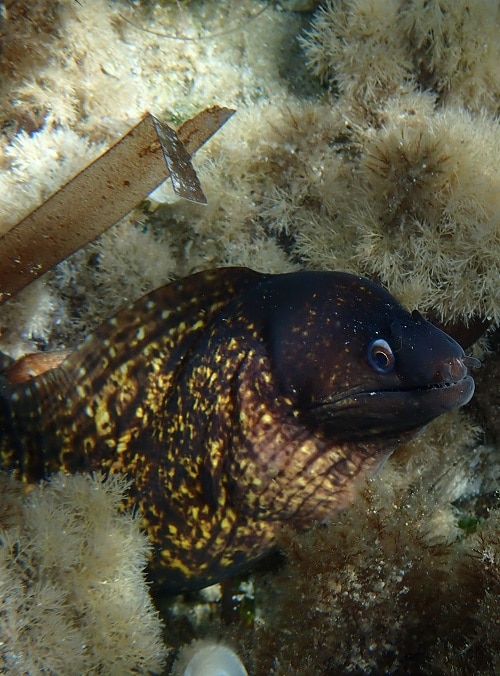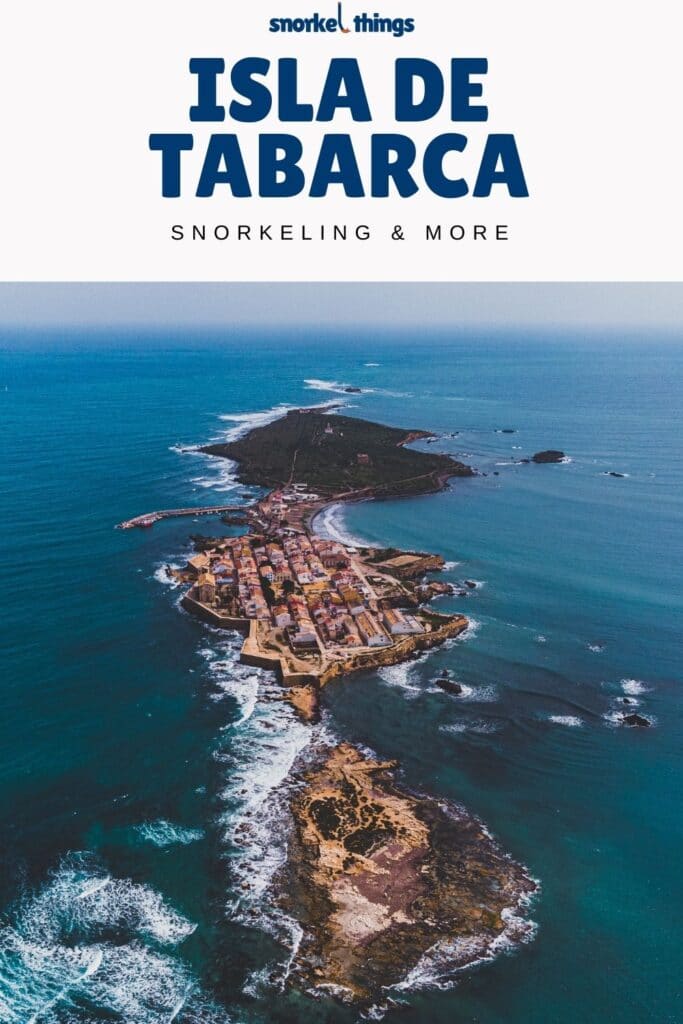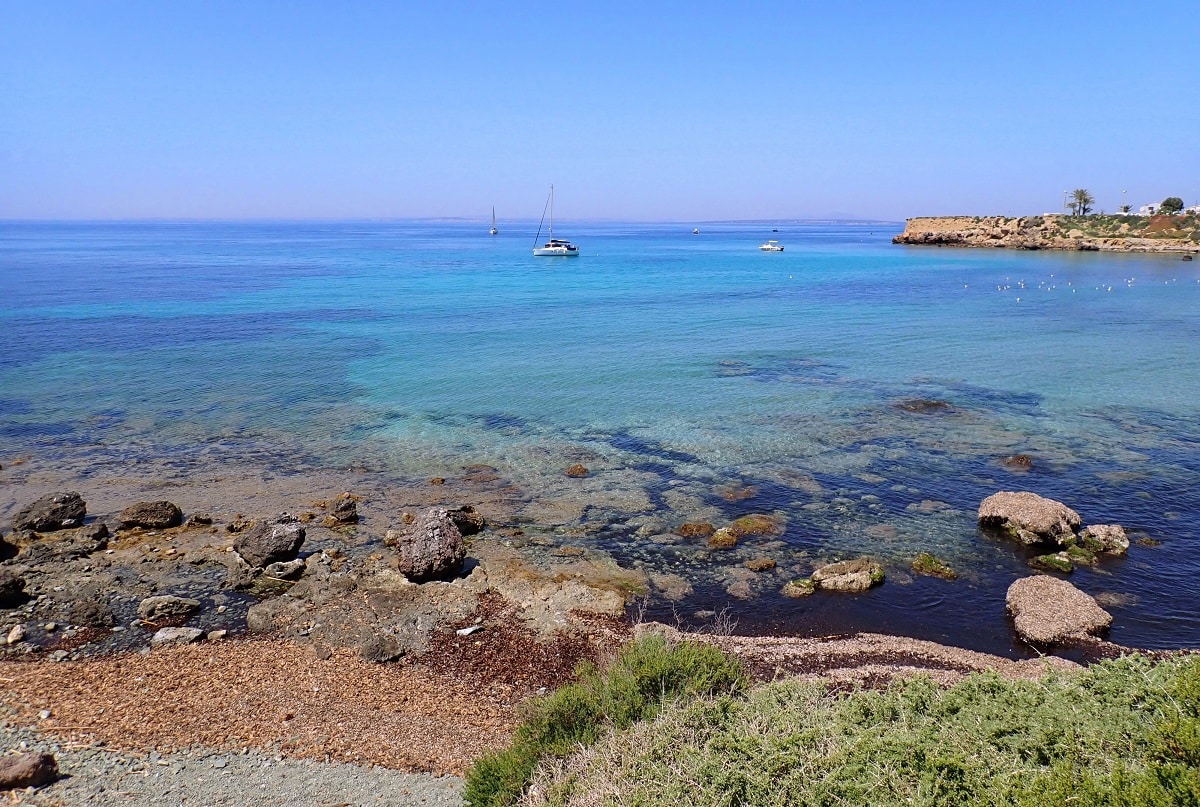Visiting the Spanish Costa Blanca? Don’t miss out on Isla de Tabarca, a small islet just 1.8km (5,900 ft) in length. The island is surrounded by a protected marine reserve and is an absolute gem full of beautiful beaches, history, wildflowers, restaurants and snorkel opportunities. It’s easy to get to and my personal favorite day trip recommendation if you’re in Alicante province.
Keep reading for my top tips on Isla de Tabarca snorkeling, how to get to the island and more.
How to get to Tabarca island
Getting to Tabarca island isn’t too challenging wherever you are on the Costa Blanca, as it’s a favorite day trip location for locals and tourists alike. If you’re staying in Santa Pola, you’re in luck: it’s the closest town to the island. Ferries also leave from various other places, including popular Alicante city, Benidorm and Torrevieja.
Let’s have a look at how to get to the island to get some snorkeling and sunbathing in! Tip: pick a day that’s forecasted to be sunny without too much wind. The boat trip can get a little intense if waves are high, and winds will be even stronger out on the island which spoils the fun a little. In fact, boat trips can be cancelled if the weather is very unfavorable.
From Santa Pola
There are various different ferries to choose from that’ll take you from Santa Pola to Isla de Tabarca and back. Some are basic, whereas others offer extra options like submarine vision boats, snorkel or scuba diving trips and more. Just browse a little to check out current prices and services.
A few of the boat companies you can have a look at, all of which allow you to buy tickets online, include:
From Alicante
Getting from Alicante to Tabarca will cost you around 50 minutes. You can take one of the Cruceros Kontiki ferries, which leave from the main port area and are easily recognized by their bright red color. It’s nothing fancy, but it gets you across, has an open upper deck to soak up the sun and wind and offers some basic food and drink options.
At the time of writing, Cruceros Kontiki:
- Offers daily trips to and from Alicante, leaving in the morning and returning in the afternoon.
- Tickets are €21 but free for kids under 4.
- Sells tickets online here.
- Offers extra services like charters and snorkel tours.
- Rents out basic snorkel equipment for a small fee at the ticket desk.
From Benidorm
Of the three towns discussed here, Benidorm is the furthest away from Tabarca. It’ll take you 1 hour 15 minutes to get to the island. You can take the Excursiones Benidorm ferry, which at the time of writing offers trips both to Alicante and Tabarca and just Tabarca, depending on the day. Tickets are €35.
If this option is not available, just hop on a tram to Alicante city and go from there. It’s easy enough to get there and your options for Tabarca trips are a little better. If you’ve got a (rental) car, I recommend cruising straight to Santa Pola.
Did you know? Tabarca island has very long history and, yes, it includes pirates. Nowadays, it boasts a permanent population of only around 50, although that number increases significantly during summer.

Isla de Tabarca snorkeling
Tabarca island is one of the best places to get some snorkeling in if you’re on the Costa Blanca. Most of the coast isn’t much to write home about in terms of snorkel, but the islet forms part of a marine reserve and is a nice little exception. It boasts some cool wildlife and I noticed that shoals of fish were very relaxed about my presence.
You can snorkel from mid-spring to early autumn, although I recommend wearing a wetsuit unless it’s high summer. You’ll be able to enjoy waving seagrass (Posidonia sp.) prairies and a very wide range of marine creatures. Species I’ve spotted include, but are definitely not limited to:
- Painted comber (Serranus scriba)
- Flathead grey mullet (Mugil cephalus)
- Mediterranean moray eel (Muraena helena)
- Ornate wrasse (Thalassoma pavo; very colorful!)
- Slender goby (Gobius geniporus)
- Common two-banded seabream (Diplodus vulgaris)
- East Atlantic peacock wrasse (Symphodus tinca; very colorful!)
- Mediterranean rainbow wrasse (Coris julis; very colorful!)
- Various sea urchin species
- Various sea cucumber species
| Water temperature high | 24.8 °C/77 °F |
| Water temperature low | 15.2 °C/59 °F |
| Characterized by | Marine reserve with seagrass |
| Amenities? | Yes, bathroom and showers at Playa de Tabarca |
| Anything else? | Leave aggressive nesting seagulls alone! |
Isla de Tabarca snorkeling: Beaches & map
The main beach on the island is called Playa de Tabarca. It’s sandy, which means not as much to see, and the surf can be strong. That’s why for snorkeling, it’s not my favorite. It does offer chairs and umbrellas, showers and a public bathroom.
For better snorkeling, have a look at the markers I’ve laid out for you on the map below. You can copy their coordinates to save them. I like to go to Marker 1, which features rocks, sand and seagrass. There is a tiny islet (La Galera) you can swim to and the water is shallow with plenty of sealife.
For beginners or if the surf is too strong at Marker 1, you can head to Marker 2. It’s next to the port and the water is almost always completely still there, although it’s not quite as colorful. Lastly, there’s Marker 3, which is next to larger islet called La Cantera.
The great thing about all of the spots below is that they’re all very close to each other. You can easily visit all three in one day without tiring yourself out too much at all. If you don’t want to go on your own, you can check out Tabarca Snorkel or choose a boat service which also offers packages that include snorkel tours.




Other things to do on Tabarca island
Have you finished snorkeling or just not up for it today? Don’t worry, the terrestrial part of Isla de Tabarca is just as nice as the underwater bit. The island features an uninhabited area, which is great for taking a short walk on the looping trail. Nothing difficult, don’t worry – I’ve done it in flip-flops.
It’s especially beautiful in springtime, when the old fortress of Sant Josep is surrounded by tall grass and loads of colorful wildflower species. There’s also a lighthouse to take a peek at.
You can also head to one of the many restaurants, as Tabarcan rice dishes (arroces) and stews (caldero) are particularly good. The town is also nice for a short walk and features a few interesting enough historical sites like the church and the old defense wall. There is even a little museum right next to where you’ll get off the boat!
You can find more tips on other things to do on the island in the Ultimate Tabarca Survival Guide.
Staying on Tabarca
The island is tiny, but if you’re really enjoying yourself (or plan on doing so), you can absolutely stay overnight. In fact, some ferry operators allow you to use your return ticket whenever. There are a few hotels and other options.
You can find your accommodation through Booking:




If you have any more questions about Isla de Tabarca snorkeling and other activities or if you want to share your own favorite things to do on the island, don’t hesitate to leave a comment below!

